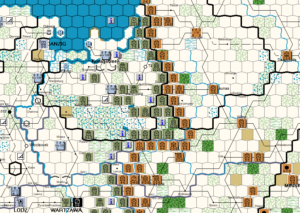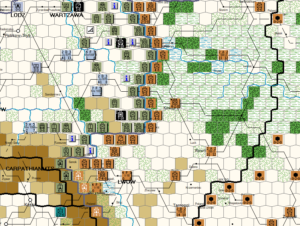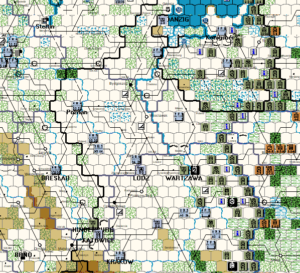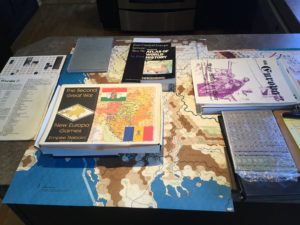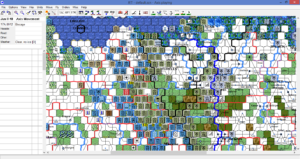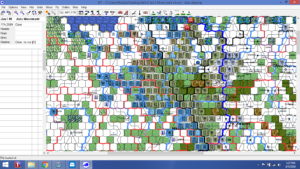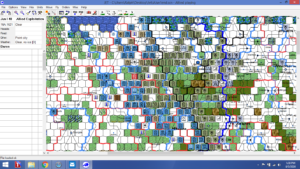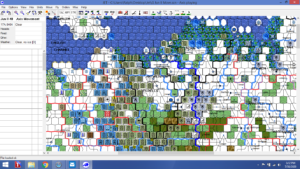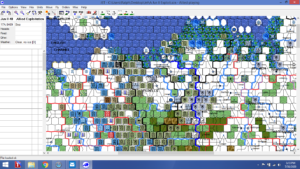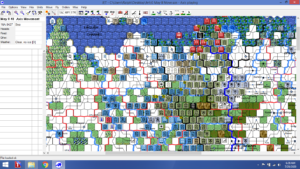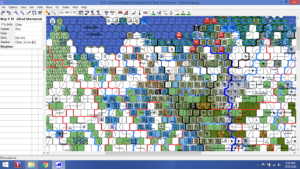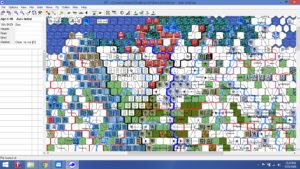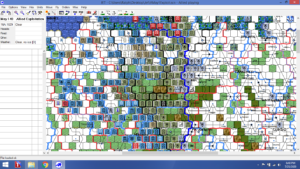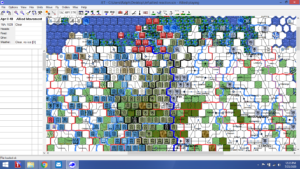An even later post to complete the account started in an already late post.
The game followed the standard Europa sequence, with the Axis phase first during the September I turn. Tim made some adjustments to his defenses, especially in the vicinity of Narvik. Regardless, the Allied landings went smoothly, with German air accounting for only one transport lost as well as one landing craft. Unfortunately, the lost transport contained the Headquarters for the 78th Division. In Europa, without a supporting headquarters, a regimental/brigade sized unit fights at one-half strength. The engineer unit was able to land at the port of Andennes, but would not be able to start work on the airfield next turn. By turn’s end, this was the situation.
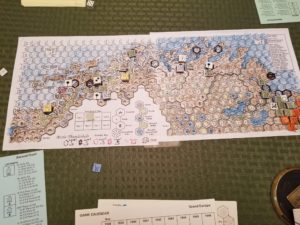
The September II turn went badly for the Allies. The weather turned, with stormy seas and mud creating rains. In this weather, beach landings are prohibited, ground movement is slowed, and engineering tasks take twice the time. This effected the Allied airfield construction and efforts to land reinforcements and supplies. Worse, the Germans were able to take advantage of the withdrawal of several Allied naval units from Narvik and overrun the leaderless and unsupported 78th Division. No photographic record remains of this debacle.
The weather remained muddy, but with stormy seas continuing The German units continued to pressure the Allies, but did not attack due to low odds. The Allies were able to evacuate the remaining Narvik survivors, despite Axis bombing attacks. The British were able to attack and destroy a German Penal Battalion at Bardufoss, but that was the limit of Allied successes. The situation looked very grim for the Allies at the end of turn.
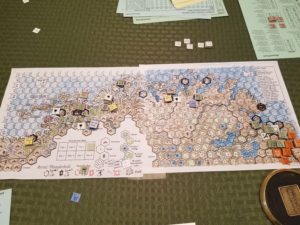
Things got worse with the weather roll at the beginning of the Oct II turn: Snow. Sea conditions became marginally better, with rough conditions. Allied air units landed at the new Andennes airfield, but ground forces were unable to make any real progress against the German defenses.
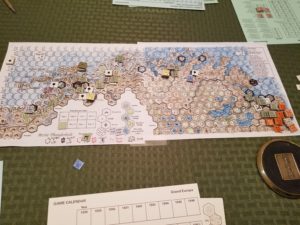
The Nov I weather roll for snow and stormy seas effectively ended the game, as the Allies were now unable to resupply their forces over beaches and movement was severely restricted.
This was a painful experience. The Europa naval rules are tortuous, especially when coastal defenses, danger zones and minefields are involved. The game becomes a slog, and because of this, no longer is a “game”, but a simulation.
The simulation makes it clear obvious why Operation Jupiter never happened. The dependence on good weather beginning in October is enough to make the entire proposition marginal at best. Add into this demands for naval resources that require the withdrawal of units that provide significant naval gunfire support, as well as critical landing craft for troop buildup and resupply, add to the “options of difficulties”.
Churchill wanted to do it and Hitler thought he would do it. Reason prevailed on the Allied side, but significant resources were still poured into Norway’s defenses. Was this irrational, or did Hitler’s fixation prove to be a deterrent?
I hope Tim will post up with his thoughts. But here, briefly, is what we discussed right after I threw in the towel.
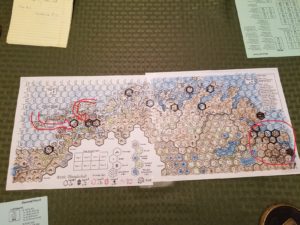
I have circled the northern part of the map to represent the positions of Soviet troops. They are too few, the German positions to well fortified, to do anything more than tie down assets that could be used against the landings to the south.
The Narvik landings could have taken place to the west, with the forces crossing the narrow straits. This would slower, but might allow a greater buildup of troops using minor ports. Again, with time of the essence, I chose a more direct approach.
Me, I’m just glad the game, and these posts, are done. OOFTA!
